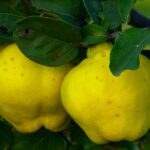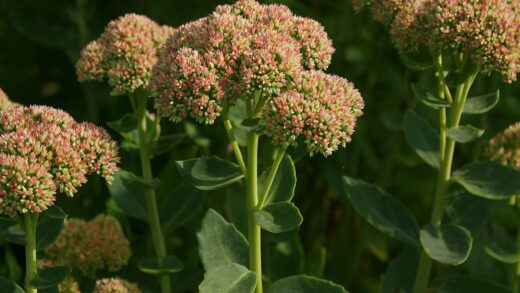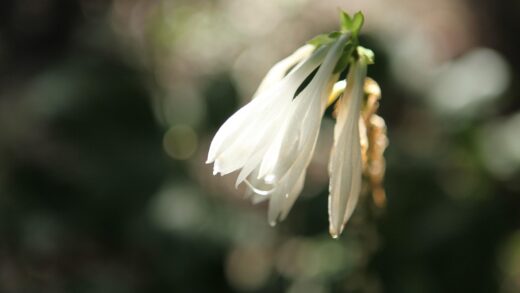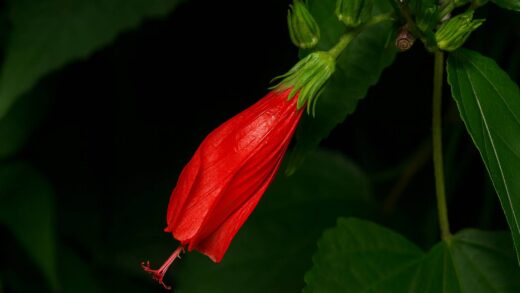Providing the proper nutrition is essential for cultivating a vibrant and floriferous fernleaf peony, yet its needs are more modest than many other garden perennials. The key to successful fertilization is balance and timing, focusing on supplying the right nutrients at the right time in the plant’s growth cycle. Over-fertilization, particularly with high-nitrogen fertilizers, can be far more detrimental than under-fertilization, leading to lush but weak foliage at the expense of flowers. A strategic approach that emphasizes building healthy soil and supplementing gently will ensure your fernleaf peony has the resources it needs to thrive for years to come.
Fernleaf peonies are not considered heavy feeders, and in a naturally fertile, well-draining loam rich in organic matter, they may require very little supplemental fertilizer to perform beautifully. The primary goal of any fertilization program should be to support the plant’s overall health, promoting strong root development and sturdy stems capable of supporting the large, vibrant blooms. The three main macronutrients to consider are nitrogen (N), phosphorus (P), and potassium (K), each playing a distinct role in the plant’s growth and development.
Phosphorus is particularly important for peonies as it plays a crucial role in root development and flower production. A deficiency in phosphorus can lead to a weak root system and a disappointing lack of blooms. Potassium contributes to the overall vigor of the plant, helping to regulate water movement and improving its resistance to disease and environmental stress. While nitrogen is essential for foliage growth, it must be applied judiciously, as an excess can stimulate weak, leafy growth that is more susceptible to disease and can inhibit flower formation.
The ideal fertilizer for peonies is one that is low in nitrogen and higher in phosphorus and potassium. A balanced, slow-release granular fertilizer with an N-P-K ratio such as 5-10-10 or 10-20-20 is often recommended. Organic amendments and fertilizers, such as bone meal, compost, and well-rotted manure, are also excellent choices as they release nutrients slowly and improve the soil structure at the same time. These organic options provide a more holistic approach to plant nutrition.
The best time to fertilize
The timing of fertilizer application is just as important as the type of fertilizer you use. The main feeding should be done in the very early spring, just as the new reddish shoots are beginning to emerge from the ground. Applying fertilizer at this stage provides the plant with the necessary nutrients right at the beginning of its most active growth phase. This ensures it has the fuel it needs to develop its lush foliage and set abundant flower buds for the upcoming display.
More articles on this topic
A single application of a slow-release granular fertilizer in the spring is often sufficient for the entire year. The fertilizer should be applied around the drip line of the plant, which is the area on the ground corresponding to the furthest reach of its leaves. Avoid concentrating the fertilizer directly against the crown or stems, as this can cause chemical burns and damage the plant. After applying the granules, gently work them into the top layer of soil and water the area well to help activate the fertilizer and start the process of nutrient release.
A second, much lighter application of fertilizer can sometimes be beneficial immediately after the plant has finished flowering. This post-bloom feeding helps the plant to replenish the energy it expended on producing its spectacular display and supports the development of the underground storage roots for the following year’s growth. If you choose to do a second feeding, use a very light hand and ensure the fertilizer is low in nitrogen.
It is critically important to avoid fertilizing your fernleaf peony in the late summer or autumn. Applying nutrients, especially nitrogen, during this period can stimulate new, tender growth at a time when the plant should be entering dormancy. This late-season growth is extremely vulnerable to damage from the first frosts and can disrupt the plant’s natural preparation for winter. Ceasing all fertilization by mid-summer allows the plant to harden off properly and enter its dormant phase successfully.
Organic fertilization methods
Utilizing organic methods to fertilize your fernleaf peony is an excellent strategy that nourishes the plant while simultaneously improving the health of your soil. Well-rotted compost is one of the best amendments you can use, as it provides a wide range of essential nutrients and micronutrients in a slow-release form. It also adds valuable organic matter to the soil, which improves its structure, aeration, and water-holding capacity, creating the ideal environment for the peony’s root system.
More articles on this topic
Applying a top dressing of compost around the base of the plant in the early spring is a simple and effective way to provide a season’s worth of gentle nutrition. Simply spread a 2 to 5-centimeter layer of finished compost on the soil surface around the plant, extending out to its drip line. Be careful not to pile the compost directly against the plant’s crown. The natural activity of earthworms and soil microbes, along with rainfall, will gradually work the nutrients down into the root zone.
Well-rotted animal manures, such as cow or horse manure, can also be a valuable source of nutrients. However, it is absolutely essential that the manure is fully composted or aged before it is applied. Fresh manure is extremely high in nitrogen and salts, which can severely burn the peony’s roots and cause more harm than good. Aged manure can be applied in the same way as compost, as a top dressing in the spring.
Other specific organic amendments can be used to target particular nutrient needs. Bone meal is an excellent organic source of phosphorus and calcium, which can be beneficial for promoting strong root growth and abundant flowers. It can be lightly incorporated into the soil around the plant in the spring. Wood ash from a fireplace can be used sparingly to provide potassium and to slightly raise the soil pH if your soil is acidic, but it should be used with caution as too much can drastically alter the pH balance.
Understanding soil pH and its impact
The pH of your soil is a critical factor that governs the availability of nutrients to your fernleaf peony. Soil pH is a measure of its acidity or alkalinity on a scale from 0 to 14, with 7 being neutral. Fernleaf peonies perform best in a soil that is neutral to slightly alkaline, with an ideal pH range of approximately 6.5 to 7.5. When the soil pH falls outside of this optimal range, certain essential nutrients can become chemically “locked up” in the soil, making them unavailable for the plant to absorb, even if they are present in sufficient quantities.
If your soil is too acidic (with a pH below 6.5), nutrients like phosphorus and magnesium may become less available to the plant. Acidic soil can also lead to an increased uptake of certain micronutrients to toxic levels. To raise the pH of acidic soil, you can amend it with materials like dolomitic lime or wood ash. These amendments should be applied in the autumn, allowing them time to react with the soil and adjust the pH before the next growing season begins.
Conversely, if your soil is highly alkaline (with a pH above 7.5), it can lead to deficiencies in other nutrients, most notably iron and manganese. Iron deficiency is a common problem in alkaline soils and typically manifests as chlorosis, where the leaves turn yellow while the veins remain green. To address this, you can apply chelated iron to the soil or as a foliar spray. In the long term, incorporating acidic organic matter like peat moss or pine bark fines can help to gradually lower the soil pH.
The best way to determine your soil’s pH is to use a simple home test kit or to send a soil sample to a professional laboratory for a more detailed analysis. A lab test will also provide you with information on the existing levels of major nutrients in your soil. Understanding your starting point allows you to make targeted amendments and choose the right fertilization strategy, ensuring that the nutrients you apply will actually be available for your fernleaf peony to use.
Signs of nutrient imbalance
Observing your fernleaf peony’s foliage can provide valuable clues about its nutritional health and help you identify potential nutrient imbalances. While many factors can cause leaf discoloration, specific patterns can often point towards a particular deficiency or excess. A healthy, well-nourished plant should have deep green, vibrant foliage throughout its active growing season. Any deviation from this can signal a need to adjust your fertilization practices.
A general yellowing of the leaves, especially the older, lower ones, can be a sign of nitrogen deficiency. The plant may also appear stunted or weak. However, yellowing leaves can also be a symptom of over-watering, so it is crucial to assess the soil moisture conditions before jumping to conclusions and adding more fertilizer. If the soil is not waterlogged, a light application of a balanced fertilizer in the spring should correct the issue.
As previously mentioned, an excess of nitrogen is a more common problem for peonies and has very distinct symptoms. This will result in unusually lush, dark green, and often weak, floppy foliage. While the plant may look vigorous, this rapid vegetative growth comes at the expense of flower production. If your fernleaf peony produces a large, beautiful bush of leaves but few or no flowers, excessive nitrogen in the soil is a very likely culprit. To remedy this, cease all nitrogen fertilization and consider using a fertilizer with a 0-10-10 or similar ratio to encourage a better balance.
Interveinal chlorosis, where the leaf tissue turns yellow but the veins remain green, is a classic symptom of iron deficiency, which is common in high-pH, alkaline soils. Other micronutrient deficiencies can cause various spotting or discoloration patterns on the leaves. If you suspect a nutrient imbalance, a comprehensive soil test is the most reliable way to diagnose the problem accurately. This allows you to make precise corrections rather than guessing, ensuring you are providing your fernleaf peony with exactly what it needs for optimal health.


















